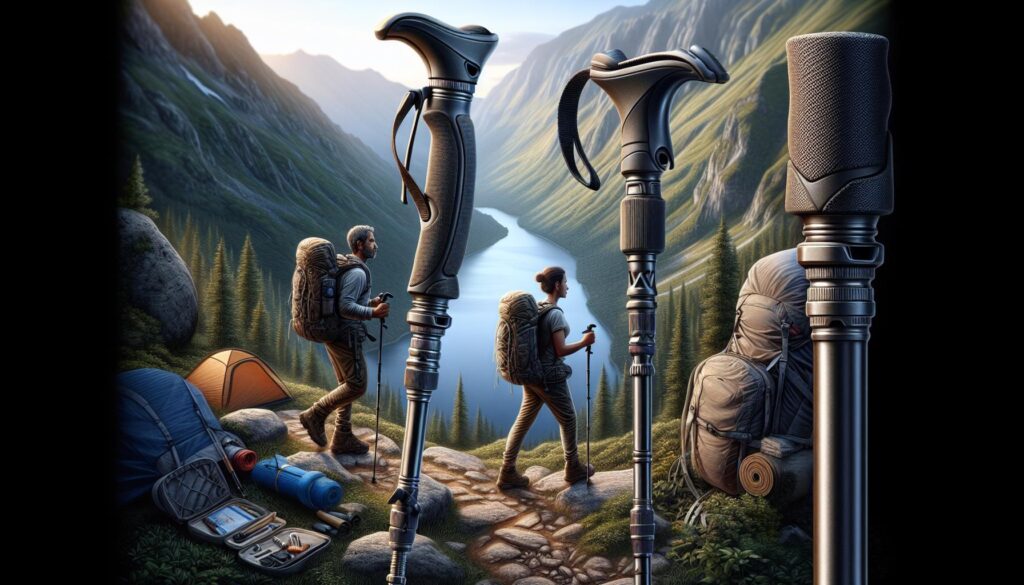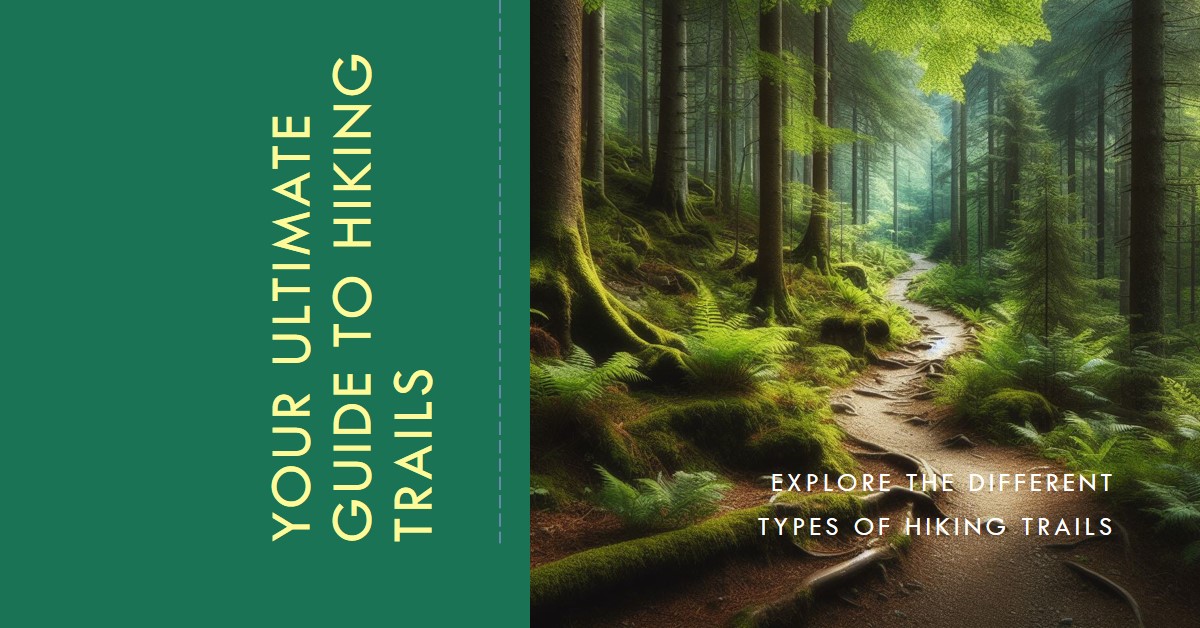Trekking poles and hiking poles: they may appear identical but serve distinct purposes during outdoor excursions.
Table of Contents
The Perks of Using Trekking Poles
Trekking poles are game-changers for enthusiastic adventurers, bestowing perks that hiking poles might lack. Ultimately they give superior stability and balance, lighten the load on joints, bolster stamina, and impart additional support in tough terrains. They are perfect companions for safeguarding your knees and enhancing your trekking experience.
Integrating trekking poles into your hiking or trekking regime can reap sizable benefits. The standout advantage is their capacity to mitigate joint stress. The poles aid in distributing body weight, thus diminishing strain on your knees and ankles. This aid is particularly invaluable while navigating steep inclines or rough terrains, enabling the poles to serve as extra support system.
You can also leverage trekking poles to augment balance and stability. Wielding poles helps hikers maintain superior equilibrium, aiding in avoiding unforeseen tumbles or slips. This quality is especially critical when traversing slippery terrains or river fordings.
Moreover, trekking poles can boost your speed and endurance. The usage of poles involves your upper body while walking, leading to more fluid total movement. This coordination can enable adventurers to cover expansive trails in shorter durations, consequently increasing their speed and endurance.
The Edge Of Using Hiking Poles
Unveil the unique advantages offered by hiking poles over their trekking counterparts. Hiking poles facilitate stability, alleviate joint stress, and accentuate balance throughout your outdoor journeys. Dodge monotonous repetition and select the suitable apparatus for an enthralling hiking experience.
- Complete Upper Body Exercise: Exploit hiking poles during your adventure to engage your upper body, adding an extra dimension to your workout. The motion of propelling yourself with each stride aids in fortifying your arms, shoulders, and back muscles.
- Better Posture and Alignment: Hiking poles stimulate improved posture and physical alignment. They help in distributing body weight evenly across the body, reducing pressure on your lower back and knees. This promotes maintaining an upright spine and a precise walking stride.
- Support in River Crossings and Downhill Trails: Hiking poles lend stability and assistance during stream crossings or while maneuvering steep downhills. They serve as an additional point of contact with the ground surface, helping to avoid slips and falls.
Choosing The Perfect Pole For Your Excursions
| Trekking Pole vs Hiking Pole |
You must take into account the terrain and activity you tend to encounter during your outdoor explorations when picking your pole companion. The highly versatile adjustable poles are your go-to choice for uneven terrains or steep slopes as you can tweak their length empathetic to the terrain for maximum stability.
Abide by the material and weight of the poles, especially for lengthy adventures. The lightweight poles, most commonly manufactured from carbon fiber or aluminum, are preferred by long-distance hikers, as they lessen fatigue and arm strain. On the contrary, if durability is your preference, then fixed-length poles, typically crafted with aluminum, should be your pick.
Trekking Pole Vs Hiking Pole: An In-Depth Analysis
The distinguishing factors between trekking and hiking poles are their distinctive design and construction. Trekking poles usually possess a telescopic or foldable shaft, supporting quick height adjustments, making them suitable for a wide range of terrains and user heights.
In contrast, hiking poles are often equipped with a single sturdy shaft design, which guarantees superior stability on rugged trails or rocky surfaces. The solid structure makes them more durable and resistant to extensive usage over time.
The locking mechanism and adjustability of the poles are also imperative for consideration. Trekking poles typically embrace a twist lock or a lever lock system to lock their length in place. These locking systems are user-friendly and quick to operate.
Hiking poles, on the other hand, usually rely on a flick lock mechanism, which involves firm locking of the pole’s length with a robust metal clamp. This system ensures a steady grip and is renowned for its reliability in severe conditions.
Even though both trekking poles and hiking poles are designed for extended longevity, their lifespan is dependent on several factors. Over time, trekking poles with adjustable features and locking mechanisms can be prone to wear, while hiking poles with their strong construction and fewer adjustable elements are more robust and durable, making them a preferred choice for lengthy treks or demanding terrains.
Determinants Influencing Pole Selection
Several determinants need to be taken into account when choosing between trekking and hiking poles. Solo vs group hiking is one factor to evaluate based on your hiking tendencies. Trekking poles would be apt for solo explorers favoring challenging terrains. Conversely, hiking poles are suitable when hiking in a group, maintaining tempo, and rhythm. Another critical factor is your fitness level and age. Hikers needing additional balance assistance or those with specific physical restrictions may prefer trekking poles offering additional features such as shock absorption. Finally, personal preference and experience also come into play when making the decision. Veteran hikers often have a favorable pole type based on past experiences, whereas novices might need to test out different types to determine what suits them best.
The Significance Of Adequate Pole Usage Techniques
Trekking and hiking poles are invaluable assets for outdoor enthusiasts. Using these poles properly can dramatically enhance your hiking experience by providing additional balance and support. While holding the pole, ensure that your hands are relaxed and your fingers gently clasp around the grip.
When engaging the wrist straps of either the hiking pole or the trekking pole, it’s fundamental as it lessens the toll on your hands, and aids in maintaining a firm grasp.
It’s vital to adapt the length of your pole in accordance to the terrain for supreme performance. During uphill hikes, slightly reducing the pole length can help engage your upper body, yielding more balance. Conversely, while descending downhill, extending the poles can help absorb shock, thereby reducing the stress on your knees.
Proper pole placement guarantees optimal weight distribution and balance. Aim to place the poles slightly ahead of you, angling them and pushing against the straps. This technique involves your core muscles and promotes stability while walking.
Preservation And Upkeep Tips For Your Adventure Gear
Are you seeking preservation and upkeep advice for your adventure equipment? Discover the key discrepancies between trekking poles and hiking poles to ensure you select the perfect gear for your escapades. Heed these valuable tips to keep your equipment in prime condition.
The preservation of trekking poles or hiking poles is pivotal to guarantee their durability and peak performance. It is vital to clean your poles thoroughly post each venture to remove any dirt or debris that may have gathered. Mild soap and water would suffice for a gentle scrub, especially focusing on the tips and handles. Refrain from using coarse materials that might impair the poles.
Once scrubbed clean, ensure the poles are dry to avoid rusting and corrosion. Remove any surplus dampness with a dry cloth and permit them to air dry in a cool and well-ventilated spot. Inspecting the poles frequently for any signs of wear and tear is also critical. Monitor the tips, straps, and locking mechanisms to ascertain they are in shape. Supposing any part appears worn or damaged, it is crucial to replace them promptly to evade potential mishaps throughout your forthcoming adventure.
To ensure durability, it is advisable to store your poles appropriately when not in use. Avoid exposing them to extreme temperatures or direct sunlight, which might damage the materials. Store them in a clean, dry place, away from sharp objects or strong chemicals that might cause damage. Adhering to these simple care and maintenance guidelines will ensure that your adventure gear remains in top shape, providing you the support required for several memorable hikes and treks.
Amplifying Your Adventure With Accessories
Amplifying your adventure experience with the right accessories for your trekking or hiking poles can significantly contribute to your comfort and safety. For trekking poles, snow baskets and rubber tips are essential accessories. Snow baskets hinder your poles from sinking into thick snow, providing stability and support. On the contrary, rubber tips enhance traction and prevent slippages on rocky terrains.
For hiking poles, manageable additions like camera mounts and compasses could be beneficial. Camera mounts allow you to seize awe-inspiring landscapes without the burden of additional equipment. Compasses can be handy for navigation, ensuring you remain on the correct route throughout your journey.
Selecting the right accessories for your endeavor is crucial. Ponder over the terrain, weather conditions, and your specific demands. Are you trekking in snow-clad mountains or navigating through dense forests? Evaluating these factors will assist you in deciding which accessories are imperative for your expedition.
Frequently Asked Questions For Trekking Pole Vs Hiking Pole
Trekking Pole Vs Hiking Pole: Which One Is Superior For Long Hikes?
Generally, owing to their lightweight composition and superior stability, trekking poles are deemed ideal for long hikes. However, hiking poles are adaptable and furnish additional support on problematic terrains. Both are equally competent, but it finally depends on personal preference and hiking style.
What Are The Perks Of Using Trekking Poles?
Trekking poles aid in redistributing weight, diminishing strain on joints, improving balance, providing stability, increasing propulsion, and offering support when crossing streams or maneuvering steep descents. Utilizing trekking poles can also lessen fatigue and enhance stamina on extensive hikes.
Are Hiking Poles Essential For Novice Hikers?
While not mandatory, hiking poles can prove advantageous for novices. They provide additional support and stability, making hikes more enjoyable and reducing the risk of injuries. Hiking poles also boost confidence, especially when traversing challenging landscapes or carrying hefty backpacks. Consequently, they can enhance the overall hiking experience for beginners.
Summing Up
In conclusion, your choice of a trekking pole or a hiking pole predominantly relies on your personal preferences and the terrain you anticipate to confront. Both poles offer benefits like increased stability, reduced joint stress, improved balance, and more. Consider factors like weight, adaptability, grip type, and additional features when making your decision.
An essential facet of deciding between the two comes down to durability. Whether you select a trekking pole or a hiking pole, it is significant to scrutinize their robustness before deciding.
Irrespective of which type of pole you end up choosing, practicing proper technique and using it safely is crucial to elevate your hiking experience.
Frequently Asked Questions For Trekking Pole Vs Hiking Pole
Trekking Pole Vs Hiking Pole: Which one is superior for extended hikes?
Trekking poles, being lighter and offering superior stability, are considered ideal for long hikes. However, hiking poles come with the advantage of adjustability, offering additional support on challenging terrains. Both variations are effective, but the selection ultimately depends on personal preference and hiking style.
What are the gains of using trekking poles?
Trekking poles aid in weight redistribution, thus lessening strain on joints and enhancing balance. They ensure stability on uneven terrains, increase propulsion, and provide support when crossing streams or navigating steep descents. Integrating trekking poles can also help decrease fatigue and boost endurance on extended hikes.
Are hiking poles a requisite for novice hikers?
While not a necessity, hiking poles can be deemed beneficial for beginners. They offer extra support and stability, making hikes more enjoyable and reducing the risk of injuries. Hiking poles also aid in building confidence, especially when maneuvering challenging landscapes or carrying hefty backpacks. As a result, they can enhance the overall hiking experience for beginners.
Trekking Pole Vs. Hiking Pole- Conclusion
Whether you choose the trekking pole or hiking pole mainly depends on your personal preference, as well as, the type of terrain you are planning to explore. Each pole offers its own set of benefits, such as enhancing stability, reducing the load on joints, improving balance, and more. Keep in mind considerations like weight, adjustability, grip type, and material durability when making your final decision. But regardless of which type of pole you choose, always remember to practice proper technique and ensure its safe usage to enhance your overall hiking experience.














